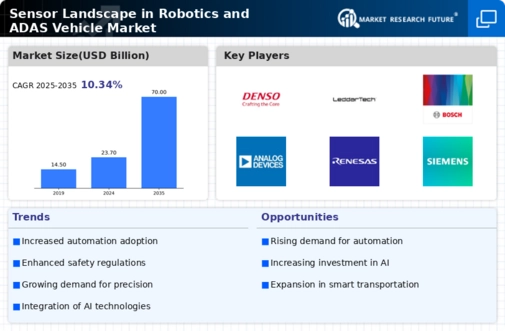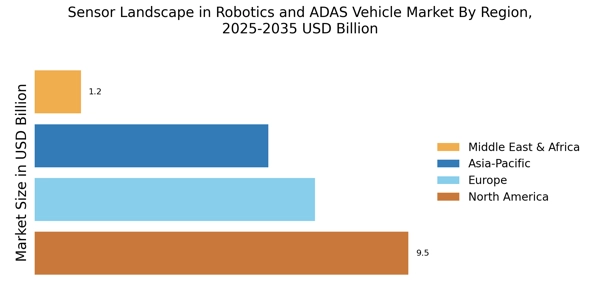The Sensor Landscape in Robotics and ADAS Vehicle Market is rapidly evolving as the demand for advanced automotive technologies and intelligent robotics systems continues to rise. Sensors play a pivotal role in enhancing the capabilities of autonomous vehicles and robotics by providing critical data for navigation, obstacle detection, and various operational needs.
Competitive insights in this market showcase an amalgamation of innovation, research, and strategic partnerships that fuel advancements in sensor technologies. The increasing push towards automation, coupled with regulatory mandates for safety features in vehicles, is stimulating the growth of this market.
Players are consistently upgrading their product portfolios, focusing on miniaturization, improved performance, and cost-effectiveness to gain a competitive edge in the landscape characterized by both established corporations and emerging startups.
Denso stands as a formidable player in the Sensor Landscape in Robotics and ADAS Vehicle Market, leveraging its extensive expertise in automotive systems and components. The company is well-recognized for its commitment to innovation in sensor technology, particularly in developing cutting-edge radar and camera systems that cater to advanced driver-assistance systems.
Denso’s strengths lie in its robust research and development framework, which enables continuous improvement and adaptation to evolving market demands. The company also benefits from strong relationships with key automobile manufacturers, positioning it as a preferred supplier for sensor solutions.
With a global footprint, Denso's presence spans various regions, enhancing its ability to tap into diverse market opportunities and establish a stronghold in the competitive landscape. In addition, the company’s focus on sustainable practices and efficient manufacturing processes aids in bolstering its brand reputation as an environmentally responsible entity in the automotive sector.
LeddarTech has carved a unique niche within the Global Sensor Landscape in the Robotics and ADAS Vehicle Market with its innovative sensing technology designed for automotive applications. The company specializes in the development of advanced solid-state LiDAR solutions, which are crucial for enhancing vehicle perception capabilities.
This positions LeddarTech as a vital contributor to the advancement of autonomous driving technologies. The company’s strengths are evident in its proprietary Leddar technology, which enables high-performance sensing with a reduced cost and size compared to traditional LiDAR systems.
LeddarTech’s adaptability to different environments and conditions makes its solutions particularly appealing to manufacturers focused on enhancing sensor integration within integrated platforms for both vehicles and robotics.
Additionally, the company’s dedication to strategic partnerships and collaborations with various industry stakeholders further strengthens its market presence, allowing it to rapidly expand its technological offerings and maintain a competitive edge in the fast-paced landscape of robotics and automotive sensors.


















Leave a Comment